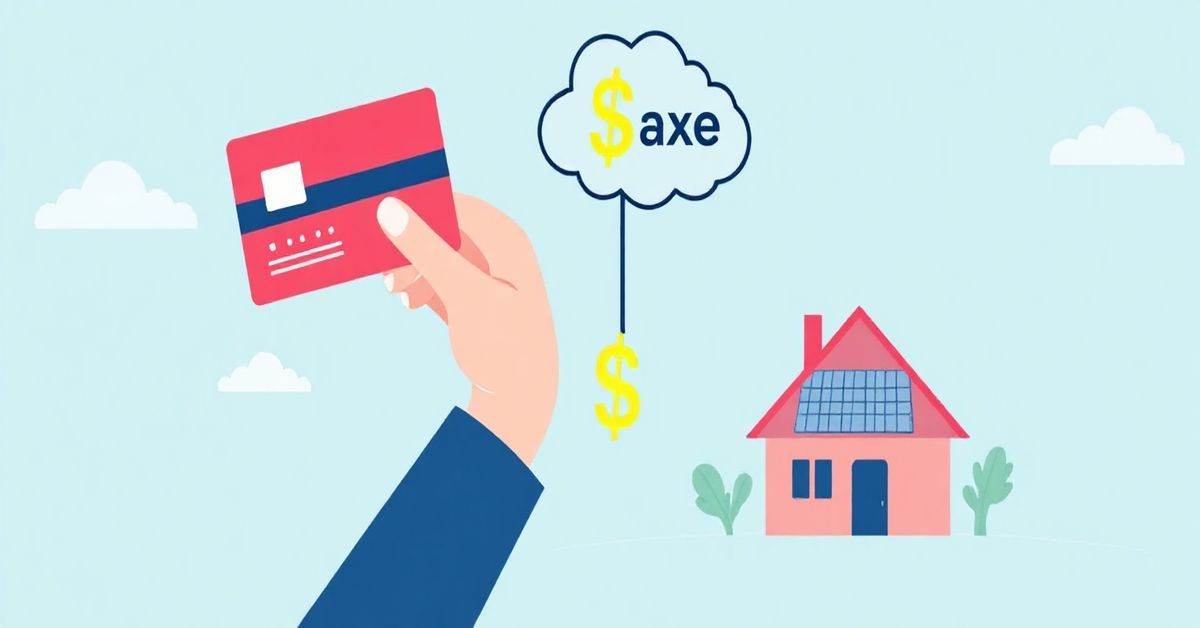Understanding Tax Credits: A Simple Guide
Imagine you’re at the grocery store checkout. A tax credit is like a coupon that you can use to pay off your total bill. Tax credits are a direct reduction of your tax bill dollar for dollar. This makes them super valuable to taxpayers. Instead of just reducing your taxable income (like a tax deduction), they actually lower your tax liability (the total you owe).
A Quick Look at Deductions vs. Credits
Before we delve deep into the world of tax credits, let’s clear up some confusion that often exists between tax deductions and tax credits. A deduction lowers the amount of your income that is taxed while a credit lowers the actual tax you owe. It can be confusing but think of it this way, it is better to have the same amount of dollar value in a tax credit than a tax deduction. For example if you have a tax liability of $2000, and you have a $100 tax credit, you now owe $1900. If you have a $100 tax deduction, and you are in the 20% tax bracket, you would owe $1980 since it is only lowering your tax liability by 20% of the deduction.
How Do Tax Credits Work?
Tax credits are designed to encourage specific behaviors or help particular groups of people. They’re often given for things like:
- Education: Paying for college tuition or educational expenses.
- Families: Having children, adopting, or providing childcare.
- Energy efficiency: Installing solar panels or making energy-saving home improvements.
- Low-income assistance: Supporting individuals and families with low incomes.
When you file your income tax return, you’ll calculate the total tax you owe based on your income and tax bracket. After that, you subtract any applicable tax credits. This can dramatically lower your total tax bill, and in some cases, could even result in a refund if the tax credits you qualify for are more than the tax you owe.
Types of Tax Credits
Tax credits can generally be categorized into two main types:
- Non-refundable Tax Credits: These are credits that can reduce your tax liability to zero but cannot result in a refund. If the total value of your non-refundable credits exceeds what you owe, you will not receive the difference as a refund.
- Refundable Tax Credits: These credits can reduce your tax liability to zero, and if there is any excess credit, you receive that amount as a refund. This means you can actually get money back from the government, even if you don’t owe any taxes.
Let’s look at some common examples of each:
-
Non-refundable:
- Child and Dependent Care Credit: This credit helps families offset the cost of childcare so that the parents can work.
- Lifetime Learning Credit: This credit is for qualified tuition and related expenses paid for courses that help individuals improve their job skills.
-
Refundable:
- Earned Income Tax Credit (EITC): This is a credit for low-to-moderate-income workers and families.
- Child Tax Credit (CTC): This credit is for families with children and is partially refundable.
- American Opportunity Tax Credit (AOTC): This education credit can be partially refundable.
Who Is Eligible for Tax Credits?
Eligibility for tax credits varies significantly based on the specific credit. Generally, some things can impact eligibility:
- Income Level: Many credits are geared toward low-to-moderate-income individuals and families.
- Filing Status: Your filing status (single, married filing jointly, head of household, etc.) can affect your eligibility and credit amount.
- Specific Expenses: Many credits are tied to specific expenses like education, child care, or home energy upgrades.
- Dependents: Having children or other dependents can often make you eligible for a range of credits.
Always double-check the specific requirements of each credit on the IRS website or consult with a tax professional. Don’t miss out on credits because you didn’t realize you qualified!
How To Claim Tax Credits
Claiming a tax credit is a very important part of tax planning. Here are some ways to make sure you get the credits you deserve:
- Stay Organized: Keep meticulous records of any receipts and documents related to qualifying expenses such as education costs, childcare payments, and documentation of your work hours.
- Use the Correct Forms: When you file your taxes, you’ll need to use the right tax forms to claim your tax credits. These forms will come with instructions that guide you through the process. It’s critical to make sure you complete each form correctly. If you aren’t sure, get help from a tax professional.
- File Your Taxes: You must file your tax return to claim any applicable tax credits.
- Get Help if Needed: Tax laws can be complex, and it’s essential to make sure you’re not missing out on credits you may be eligible for. Consider using tax preparation software or getting help from a qualified tax professional.
Common Mistakes and Misconceptions About Tax Credits
- Confusing Credits and Deductions: Many people mix up tax credits and tax deductions, thinking that they offer similar benefits. Knowing the differences between these two is important. As we discussed earlier, credits lower the taxes you owe dollar for dollar, but deductions only lower the amount of taxable income.
- Not Filing for Credits: Many eligible taxpayers miss out on credits because they either aren’t aware they exist or they find the process of filing complicated. If you are eligible for a credit, you should always take the time to figure out how to claim it.
- Overestimating Eligibility: Not every credit is for everyone. Double-check the requirements to make sure you qualify. You should ensure that you meet the eligibility criteria before claiming them.
- Thinking All Credits are Refundable: This is incorrect. As noted earlier, some credits are nonrefundable. This is why it is so important to do research and know all the details before taking a tax credit.
Tips and Strategies for Maximizing Tax Credits
- Plan Ahead: Make smart choices throughout the year to maximize credit opportunities. For example, contribute to a retirement account or an HSA.
- Keep Good Records: This is important to prove your eligibility for the credits you are claiming. Being organized with your documents is essential and will also save you stress.
- Seek Professional Help: If your financial situation is complicated or you’re not comfortable filing your taxes, get help from a professional. It’s better to be sure you’re maximizing your credits than make a mistake and miss out or be penalized for incorrect filing.
Tax credits are an important part of the tax system, and can significantly lower your tax bill. By being informed and knowing which credits you qualify for, you can maximize your financial well-being. It is essential to keep learning about tax laws as they change often. By keeping up with the changes and making smart decisions, you can make the most out of tax credits.

